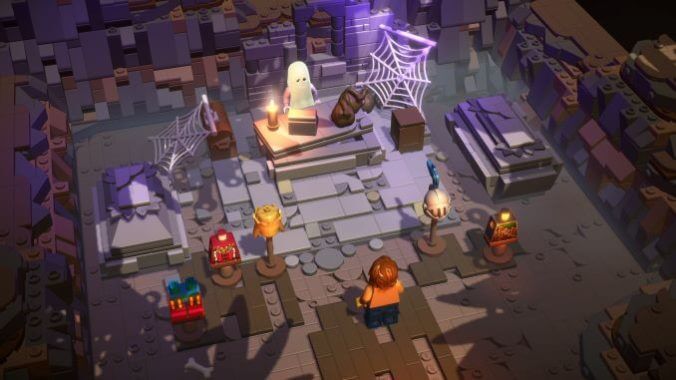Lego Bricktales Translates The Creativity of Legos to Videogames

I’ve had my eye on Lego Bricktales since it was initially revealed. While other Lego games have partially incorporated Lego mechanics, the promise of a game that let me fully realize my digital Lego-building skills was beyond enticing. In fact, it seemed like my dream Lego game (though I still adore Lego Star Wars). My expectations were admittedly very steep, so I’m ecstatic that it mostly lived up to my own hype.
Lego Bricktales emphasizes the creative freedom that Lego allows to an extreme degree. Though Bridge Constructor developer ClockStone plays things a bit close to its roots with this title, it still manages to offer a game that makes clever use of Danish plastic in its puzzles, designs and environments. While I occasionally found myself growing weary of building bridges (or bridge-like structures) with vague directions and requirements, solving puzzles and exploring the gorgeously-detailed environments in the overworld bridged the gaps left by repetitive builds.
Bricktales sees you — a nameless, helpful Lego Minifigure — stumble upon your mad scientist uncle’s disheveled lab. You and a robot companion agree to help him rebuild and save his run-down amusement park from foreclosure by harvesting the energy of pure happiness. The story’s about as goofy as you’d expect, and the writing steps up to the occasion with enough charm and occasional witty pop culture references to keep you from mashing through the dialogue. Along the journey, Lego Bricktales carries players through five different environments consisting of jungles, deserts, medieval structures, a city, and the Caribbean. All the while, you solve people’s problems with the magical power of building with Legos. While every build is situationally different, a majority of the building-focused puzzles generally require you to build some form of bridge or staircase. Each one requires different paths and heights and provides different challenges but I did find myself disappointed every time another bridge popped up. There’s nothing inherently wrong with ClockStone sticking to what it knows, but I really would’ve liked to see more build diversity with a property whose potential is so open-ended.
Bricktales isn’t all building bridges, though. On top of the standard fare, players will also construct cars, mini-helicopters, perches for birds, statues, sandcastles and plenty of other fun stuff I won’t spoil. Bricktales really begins to shine brightest when it starts embracing these other goals. Some are hyper-specific builds that require some laser-precise plastic wizardry, but others let you run wild with the prompt. Unfortunately, the more specific prompts tend to give too little and require too much, so much so that more complex builds can even get frustrating. For example, later on in the game, you’re presented with a prompt to build a pier for someone to fish off of. You’re required to leave a path that allows you to walk to the end of said pier, but doesn’t say anything else. The game’s rules dictate that a walkable path is two units wide, but I found the game didn’t accept a path I’d made that fit those rules. It took lots of random-seeming trial and error until I had something that was acceptable, but it wasn’t very different from what I’d been already doing.
Despite these annoyances and the persistence of repetitive builds, I always enjoyed myself, and was left doubly impressed by ClockStone’s ability to seamlessly blend hyper-realistic physics with Legos. Whether it was balancing a helicopter, or ensuring a car functioned properly, each detail is satisfyingly accounted for in the final version of a puzzle.
-

-

-

-

-

-

-

-

-

-

-

-

-

-

-

-

-

-

-

-

-

-

-

-

-

-

-

-

-

-

-

-

-

-

-

-

-

-

-

-








































